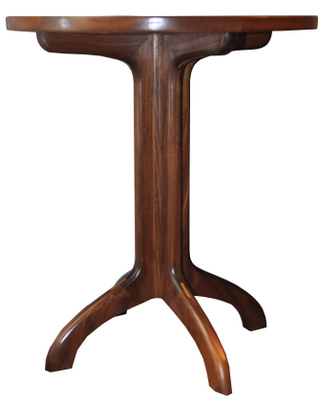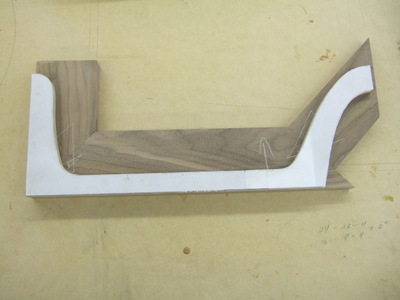
|
My standard practice is to create a full size drawing
then to copy the shape, glue it to a piece of 1/2 MDF or
plywood, then bandsaw out the shape, the sand and shape
the shape to finesse out the final form. Each leg is
made from three pieces of Walnut. The idea is to
utilize the strength of straight grain by connecting the
pieces along angled spline joints.
|
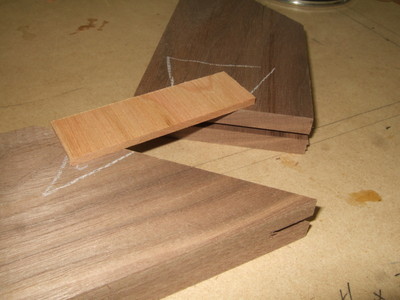
|
Slots are cut in each
piece to house a hardwood spline whos grain is at 90
degrees to the joint.
|

|
Because of the
difficulty clamping these, I chose liquid hide glue.
This glue has a long working time but a relatively quick
tack time which allows me to rub the joint together, then
simple hold it with hand pressure for a couple of minutes
while the glue tacks. After it tacks, I carefully
place it on the table and allow the glue to cure for an
hour or so.
|
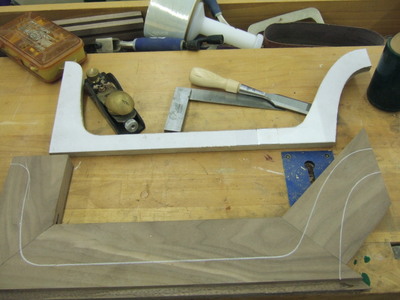
|
After cutting a tonge on
the long edge, I use the template to draw the shape then
remove the waste with a bandsaw. Later I'll use
double sided tape to attach the template to the shape and
use a flush trim bit on the router table to refine the
final shape.
|
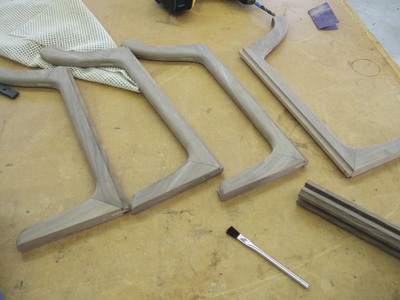
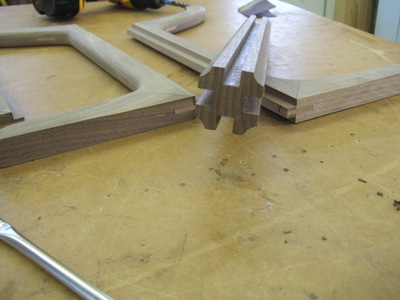
|
Square stock is used for
the center. Four grooves are cut on the four faces
of the square stock to house the tonge of each leg.
A cove bit on the router table cuts the curved shape on
each corner. After glueup, lots of sanding refines
the shape to form a continuous curve from leg to leg.
|
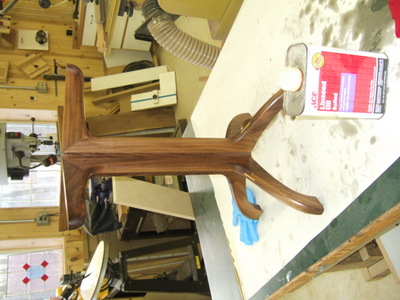
|
After glueup and final
sanding I use boiled linseed oil to bring out the richness
of the walnut.
|

